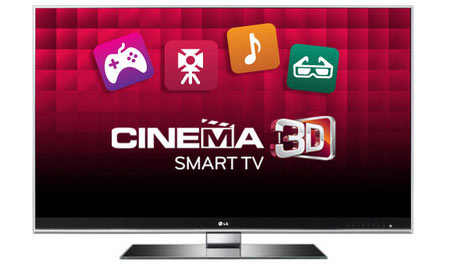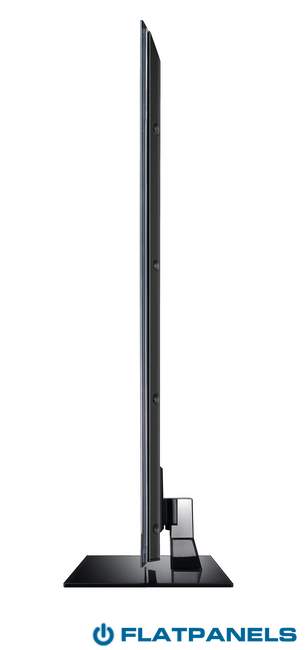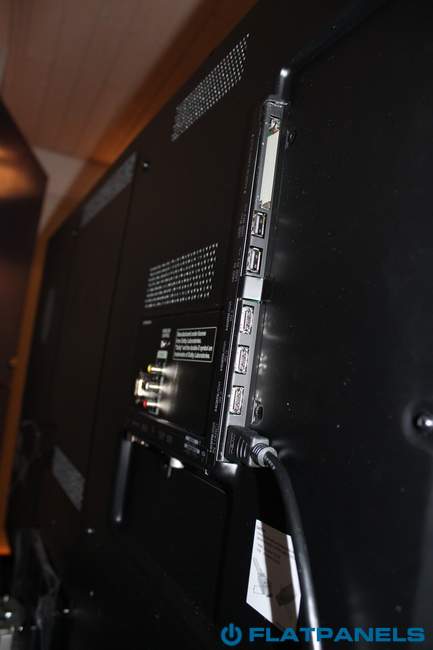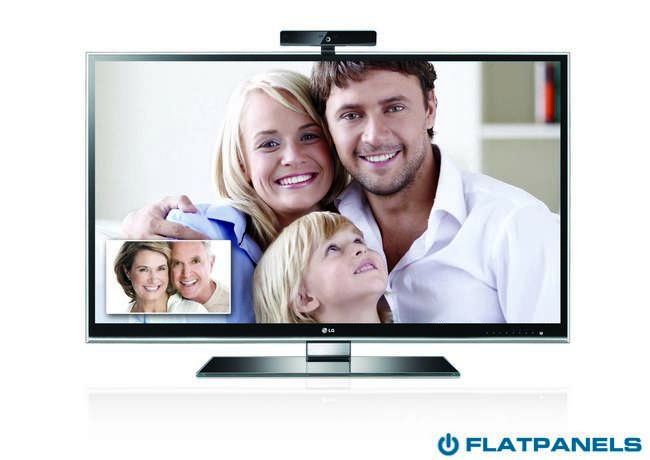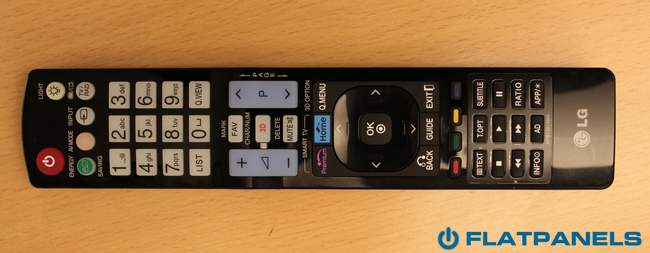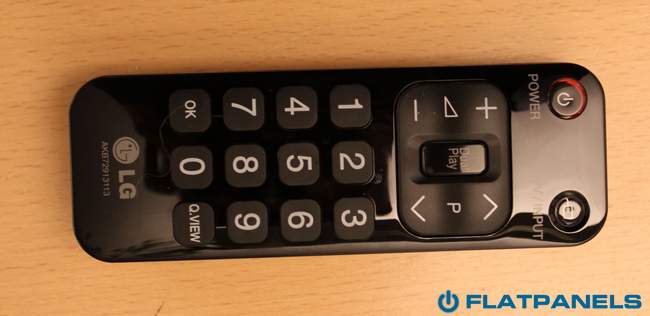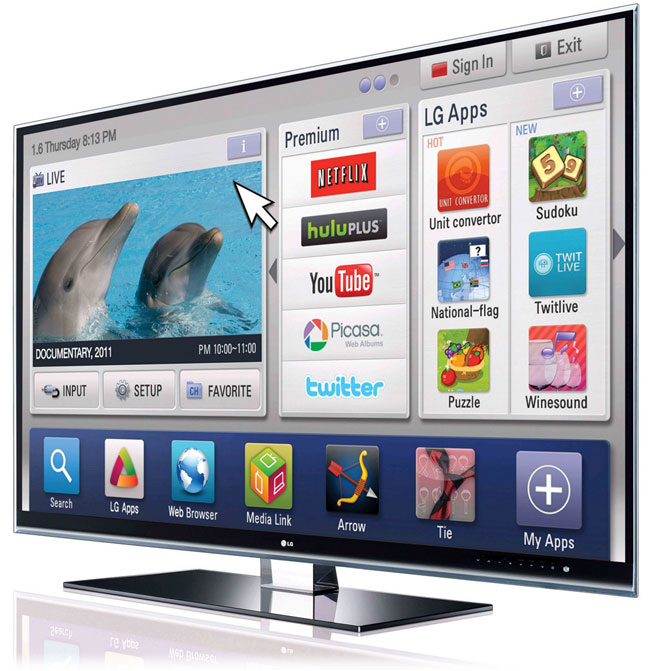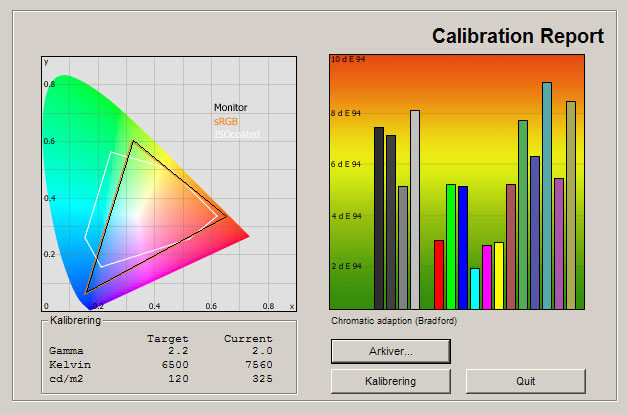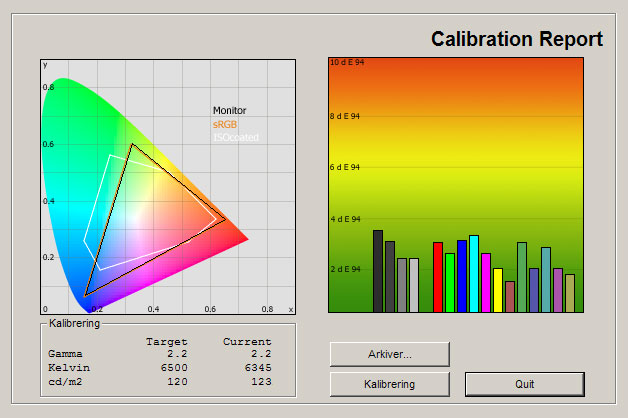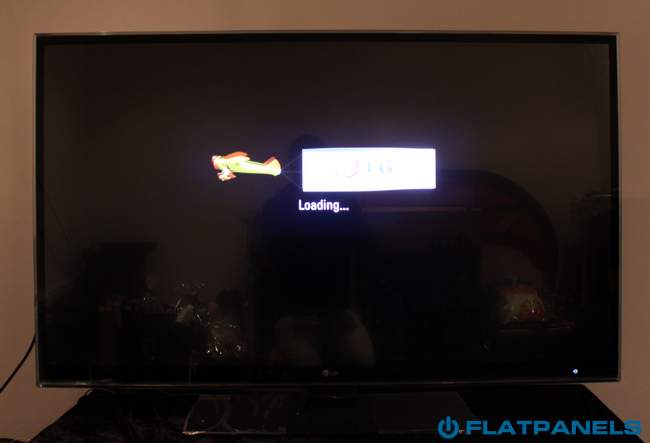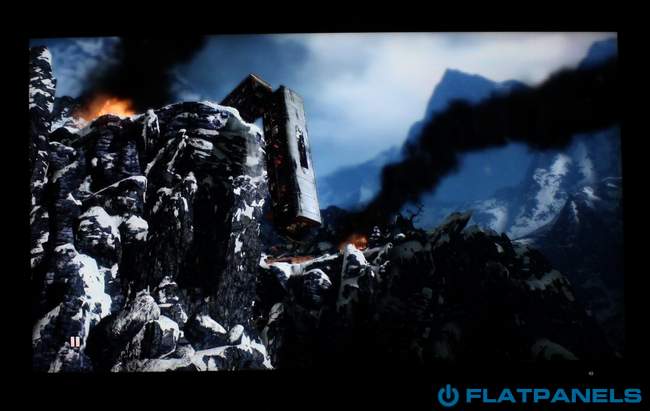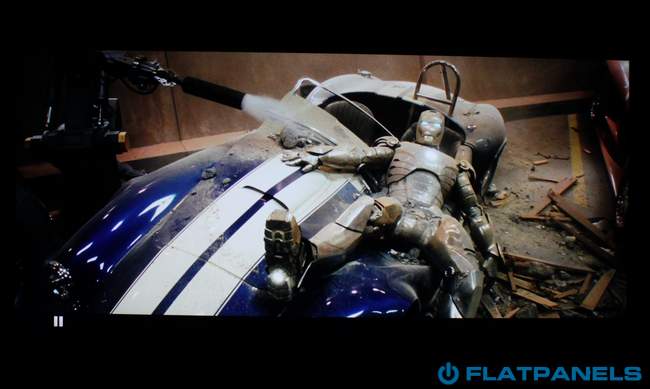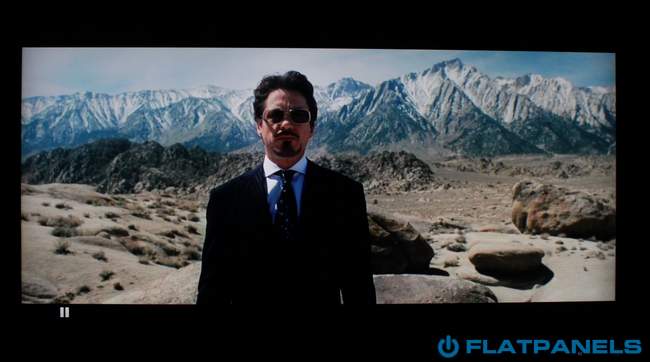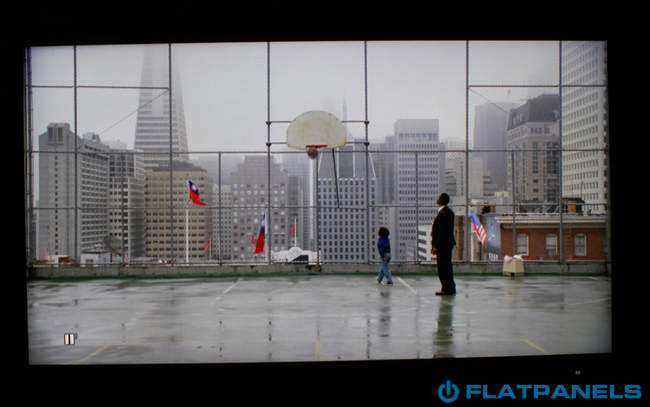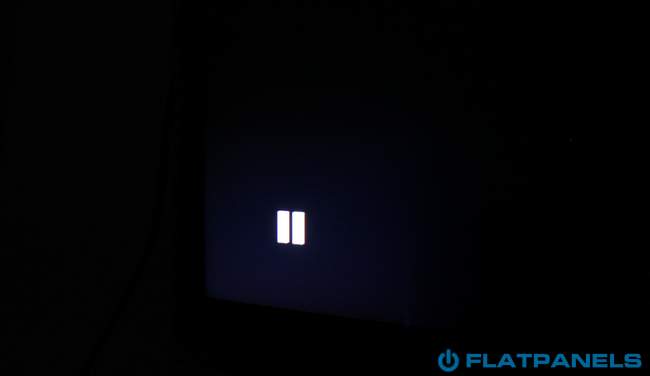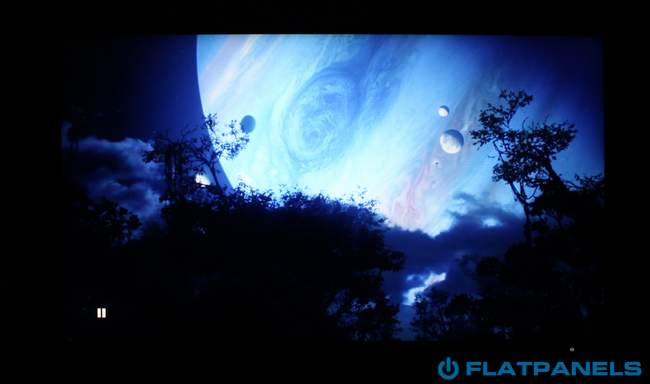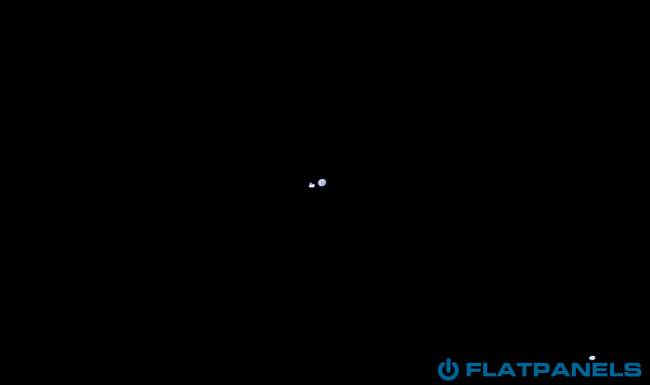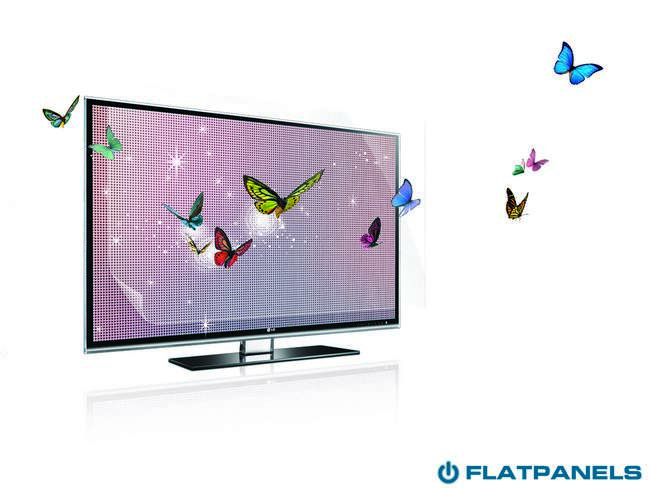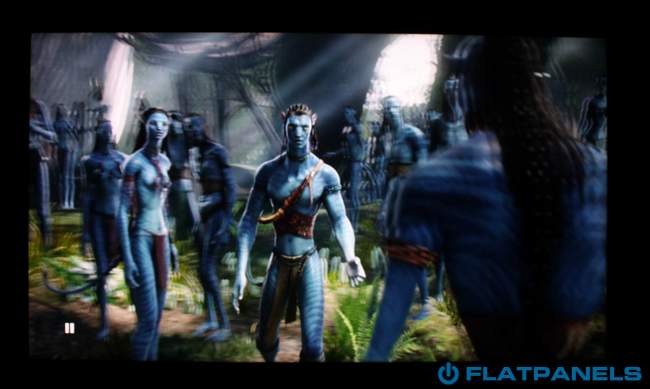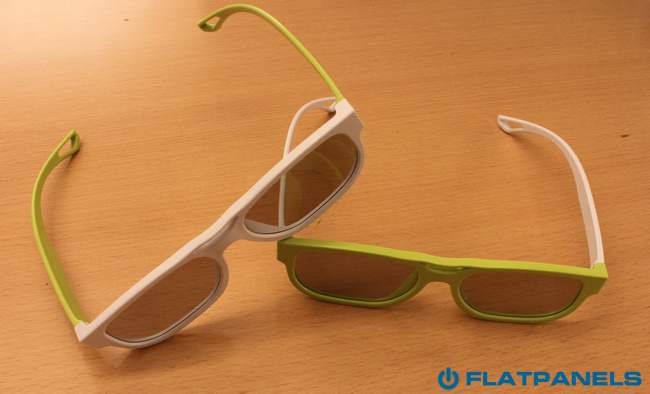Review: LG Nano LW9800
LG Nano LW9800 review
LG has released their long-awaited high-end LW9800 TV with Nano LED technology. A filter with tiny nano-size holes creates a very slim direct LED implementation with full local dimming that should provide impressive picture quality. The LW9800 TVs also incorporate Cinema 3D, Smart TV, Dual Play and much more.
But how good is the Nano LED technology compared to the local dimming LED technology in Sony HX929 / HX920? And can LG compete with much acclaimed TVs such as the Panasonics VT30? FlatpanelsHD intends to find out in this LG Nano LW9800 review.
LG Nano LW9800 is available in 47 and 55 inches 47LW9800 and 55LW9800 in the US & 47LW980(T, S or W) and 55LW980(T, S or W) in Europe. Only the tuners differ.
Subscribe to our Newsletter, RSS feed or twitter to receive notice when new reviews are online. We’ll soon publish our Samsung D550 plasma, Sony NX720, and Eizo FS2332 reviews as well.
Size: 55" widescreen Resolution: 1920x1080 Response time: 1.6 ms Contrast ratio: 10,000,000:1 Brightness: 450 cd/m2 Color support: 16,7 million colors Signal processing: 8 for each color Viewing angles (H/V): 178/178 Dot pitch: Panel type: LCD-TV with direct LED Wall mounting: Swivel stand: Dimensions (HxWxD): 76.0cm x 126.5cm x 2.7cm (without stand) Weight 29.0 kg Built-in speakers: Input formats: 480p/i, 576p/i, 720p, 1080i & 1080p (50, 60 & 24p) Inputs VGA DVI (convert through HDMI)
Audio (type) (Audio in/out)
SCART (1 input)
S-video Composite Component HDMI (4 inputs, 1 HDMI 1.4)
Other Outputs Audio (type) (1 output, headphones)
SCART S/PDIF (optical)
Other Tuners Analogue DVB-T DVB-T (MPEG4) DVB-C DVB-C (MPEG4) DVB-S DVB-S (MPEG4) Other Price and retailer:
| US retailer | UK retailer |
 |
Our first impressions
LG LW9800 builds on LG’s Borderless design philosophy. A plexiglass front covers both LCD panel and bezel, making the TV appear clean and elegant.The TV is extremely slim even though it incorporates a direct LED backlighting solution. All previous direct LED models have been significantly thicker so LW9800 is quite an achievement. The secret is the Nano filter with local dimming.
That also means that users can wall-mount the TV very close to the wall, because all inputs point either down or to the side.
The stand supports manual swivel.
Test tools
Our TV signal is DVB-S (satellite) from Canal Digital and DVB-T (terrestrial). We also have an analogue TV connection. Testing is done with the DVE (digital video essentials) and Peter Finzel test DVD. Testing is also done with DVD, TV, Blu-Ray and Media center/PC.We use our own monitorTest. The software supports some of the traditional test patterns used to evaluate displays as well as some new and unique test patterns developed by the people here on FlatpanelsHD.
Sony PlayStation 3 is our Blu-Ray player.
All contrast measurements are based on the ANSI methodology.
Functionality
LG uses the same remote control as on cheaper TVs. A few buttons have been added and removed but the plastic remote still feels cheap.LG LW9800 supports LG’s Magic Motion Remote and this small remote control is also included.
All of LG’s Smart TV features, Plex (DLNA), and multimedia features have already been covered in previous reviews and I therefore suggest you read the LG LW6500 review for more information. You can also learn more about the Plex Media Center function in our LG ST600 review.
Calibration settings
On LG’s Smart TVs you need to enter the menus with the Home button and then head to the settings option on the screen. In the menus LG Cinema 3D LW9800 has these picture setting options: backlight, contrast, brightness, sharpness, color, tint, color temperature, TruMotion, LED local dimming, and Eco mode.
In the advanced menu you can control: Dynamic Contrast, Noise Reduction, mpeg noise reduction, Super Resolution, Black Level, Gamma, Real Cinema, Color Gamut, Edge Enhancer, Color temperature, and xvYCC.
You can also choose from these picture modes: Intelligent Sensor, Vidid, Standard, Cinema, Game, Expert1 and Expert2.
Energy consumption
| Compare power consumption measurements on different TVs and monitors with our interactive power consumption applet here. |
Below I have measured energy consumption on the 55-inch LG 55LW9800.
 |  | |
| Standby | 0.0 W | 0.0 W |
| SD+HD | 130.5 W | 86.5 W |
| 3D | 190 W | 190 W |
After calibration I measured average power consumption to 86.5 W, which certainly is impressive for a 55-inch TV.
I have also included a measurement of the 3D energy consumption. In the 3D mode the backlight is often maxed out to compensate for the reduction in light from the 3D glasses. Therefore the 3D mode also typically consumes more energy.
Calibration on LG Nano LW9800
Below you can see an out-of-box measurement on LG Nano LW9800 in the Standard picture preset without Eco mode.| The graph says this: The number on the left is the delta value. Delta is a difference between two factors; here it’s the difference between the measured color on the panel and the actual color that is our target. |
The out-of-box picture settings are not very accurate and after testing TVs for several years now it becomes somewhat of a cliché. Manufacturers pump up brightness, color intensity and contrast in order to create more impressive pictures out in the stores. Everyone does it but that does not make it less problematic.
With the out-of-box settings gamma was too low in the dark grey tones and too high in the bright grey tones, meaning that bright colors are too bright and dark colors are too dark. We aim for stable 2.2 gamma.
The colors are also oversaturated as seen by the delta variations in the graph. And brightness is too high for mixed viewing.
I moved on to calibration. See the calibrated result below.
After calibration we managed to get very accurate colors and very detailed and pleasant images. Gamma is now very close to our 2.2 target and colors are reproduced almost as the standards prescribe.
Below are my calibrated settings.
 | |
| Picture preset: | Expert1 |
| Backlight | 37 |
| Contrast | 90 |
| Brightness: | 50 |
| V/H Sharpness: | 50 |
| Color: | 50 |
| Tint | 0 |
| Dynamic Contrast | Off |
| Noise Reduction | Off |
| Mpeg noise reduction | Off |
| Super resolution | Off |
| Black level | Low |
| Real Cinema | Off |
| Color gamut | Standard |
| Edge enhancer | Off |
| xvYCC | Auto |
| Color filter | Off |
| Color temperature | Warm |
| Gamma | 2.2 |
| RGB Method | 2 point |
| R contrast | -1 |
| G contrast | 0 |
| B contrast | 2 |
| R brightness | -6 |
| G brightness | -7 |
| B brightness | 14 |
| TruMotion | Off |
| LED local dimming | Medium/Low |
I used the Expert1 picture preset as a starting point and calibrated LW9800 with the RGB (red, green, blue) settings. If you are mostly watching TV during daytime you might want to increase the settings called backlight or activate the Eco setting.
Under LED local dimming it says Medium/Low and I just quickly want to elaborate on that. With the Low setting we experienced slightly less haloing and slightly better shadow detailing but black depth was not great. With the medium setting we experienced near-perfect black depth but slightly more haloing and slightly worse shadow detailing. Try for yourself and see what you prefer.
Picture quality on LG Nano LW9800
| In this section I go through picture quality with the calibrated settings. |
LG LW9800 uses a plexiglass front, which obviously causes some reflections from windows and lamps. It was less of a problem than with real-glass TVs but you need to prepare for some reflections during the daytime. I believe LW9800 is on par with the typical plasma TV here.
We measured color accuracy in the calibration section but color gradation is equally important. Our color gradient tests revealed that LG LW9800 fares well in this area but that it has some issues in the semi-dark and darks areas where some colors are hard to distinguish, creating bands in our smooth gradients patterns. Nothing worrying but not top-notch performance either.
SD picture quality looks good and detailing is high. The out-of-box settings gave us SD pictures with too much noise and digital filters but the calibrated settings provide a pleasant and detailed SD experience.
HD pictures look stunning. HD detailing is excellent and moving images are amazing. We have the 55-inch version and the large screen format obviously makes HD even more impressive but the 47-inch version should provide buyers with almost the same experience. The local dimming Nano filter makes LW9800 capable of reproducing very deep black levels, even in fast-paced scenes, and as said before; black depth is extremely important on TVs because it adds depth and vividness to pictures.
Response time is fast and we experienced very low levels of blurring on fast motion, and no overdrive trailing (halo trailing). LW9800 is a fantastic performer compared to the general LCDTV market and faster than the typical Edge LED based LCD-TV (because LW9800 uses direct LED scanning backlights). Plasma TVs are still faster but with LW9800 I believe that even discerning users will enjoy watching action and sports on LG’s TV.
Input lag (delay from signal is received to displayed on the TV) was measured to 35-40 ms without dynamic circuits. Some gamers might find this level of input lag slightly too high. TruMotion adds a lot of input lag to the signal. The LED local dimming feature also adds input lag, primarily with the “high” and “medium” settings.
We recommend that you turn off the TruMotion system. Scanning backlights are still activated even though TruMotion is off and the scanning backlight system is one of the enablers of the very fast response time on LW9800. Primarily because we are talking about a true scanning backlight system from a direct LED system that cancels motion blurring better than the scaled-down versions of scanning backlight systems in Edge LED based LCD-TVs.
Below I have measured black level and contrast.
 |  | |
| Black level | 0.00 cd/m2 | 0.00 cd/m2 |
| Brightness | 325 cd/m2 | 123 cd/m2 |
| Contrast ratio | - | - |
Contrast ratio +/- 50
After calibration I measured black level to 0.0 cd/m2, which is fantastic. We have measured the same on previous LG TVs with local dimming and it basically means perfect black depth. This is extremely rewarding in dark movies and games as it provides pictures with fantastic depth and dimension. LG is not alone in this area, however, and Sony HX929 / HX920 gave us similar results. The best plasma TVs today, such as Panasonic VT30 and Samsung D8000, are not able to reach these levels.
To learn more about how the Nano LED system works see this article.
I have to underline that this was measured with the local dimming setting set to medium. On low the local dimming system is less aggressive. We measured black depth to 0.06 cd/m2 on the low setting and 0.14 cd/m2 without local dimming.
The Nano local dimming system is not perfect, though, and we still saw halos around bright objects on dark backgrounds. This is still one of the disadvantages of local dimming systems because they incorporate too few local dimming zones. On LW9800 you will also experience these halos from time to time and it is more pronounced from wide angles, too. On the other hand LG has managed to eliminate the horizontal banding problems that plagued their previous generation direct LED model, LE8500. Great news!
The local dimming system also affects shadow detailing. The 2-3 darkest grey tones were impossible to distinguish from black. However, this is not uncommon with LCD-TVs.
Below I have examined the LG Nano LW9800 a completely dark room to see if it has clouding or backlight bleeding.
With the Nano LED system activated, LW9800 had no problems with clouding at all. But the occasional light halos occur (as described in the LED section). Personally I would much rather see tiny halos than clouding from Edge LED based LCD-TVs.
3D picture quality on LG Nano LW9800
| We used the PlayStation 3 and a 3D Blu-ray player to test 3D movies and 3D games. For a general introduction to 3D see our Panasonic VT25 / VT20 review. In this test I want to examine 3D depth, 3D picture quality, 3D crosstalk and finally include a small comparison to some of the other 3DTVs on the market. |
In the box we found a party-pack with 10 pairs of 3D glasses and two Dual Play 3D glasses needed for full-screen multi-player games.
Notice: Remember to deactivate TruMotion when watching 3D for best 3D detailing.
3D picture quality on LW9800 is great – really impressive. We recently updated our LW6500 review based on LG’s new 3D firmware, and LW9800 continues in the same lane. 3D detailing is very close to that of active 3DTVs and we experienced no crosstalk whatsoever (only when watching the TV from the top). I honestly think that LG’s Cinema 3D technology delivers as good or better 3D picture quality compared to active 3D LCD/LED models. 3D plasma TVs still outperform in this area but at the cost of expensive 3D glasses.
However, one disadvantage is the fact that LW9800 does not support local dimming with 3D material – only 2D.
On top of that the 3D glasses are lightweight, cheap, comfortable, and flicker-free, which is probably the most significant advantage. They even come as clip-on versions.
I went on to examine the Dual Play system, which is an interesting addition to LG’s 3DTVs. At the moment it is only available on LW9800 but future models will also incorporate Dual Play. Dual Play basically means that two console gamers can watch two different images on the same TV in full-screen, using special Dual Play 3D glasses. Dual Play only lets supports 2D but it works on any gaming console with split-screen.
Dual Play works as advertised. I tried to fire up Gran Turismo 5, activated a split-screen race and activated Dual Play on the LG TV via the 3D button.
Unfortunately we did experience some crosstalk (or to be more precise; image ghosting from the other player’s screen) and in GT5 it was too evident. Personally I had a hard time enjoying the actual game experience based on this imperfect implementation. I tried to activate and deactivate TruMotion and other circuits but little did it help.
We would love to see Dual Play make it as an all-round feature on LG’s TVs. Right now it only works in console games – but as said; it needs improvement.
To sum the 3D section up I have to say that LW9800 is the best implementation of 3D we have seen so far. 3D detailing is great, and only slightly below that of active 3D plasma TVs. We experienced no crosstalk, the 3D glasses are light, cheap, flicker-free and comfortable, and the 3D experience just feels uncomplicated. In my opinion the passive 3D system in this Cinema 3D variant on LW9800 is the best 3D solution for the majority of users. Dual Play is not perfect, though.
PC and Media Center
The TV supports 1:1 pixel mapping. In order to achieve 1:1 pixel mapping you need to select the aspect ratio called “Just scand" in the OSD.Viewing angles
Viewing angles are fairly wide as expected based on the fact that the TV uses an IPS panel.IPS panels generally suffer from contrast drops from wide angles but because black is pitch black, we did not experience contrast drops on LW9800 either (at least not with Local dimming set to medium or high). But the local dimming halos intensify from wide angles.
Sound quality
The speakers are hidden from the front but still gave us a decent sound experience. The integrated – yet small – subwoofer adds some punch and depth to the sound experience but for movies and music I still feel that the speakers are too weak. For casual TV watching LW9800 is fine and better than the typical thin LCD-TV.For movies, games and music I recommend separate speakers.
Conclusion
LG’s LW9800 (LW980T, S or W in Europe) features all of LG’s Smart TV functions, including TV Apps, App Store, DLNA (Plex), USB recording (in Europe) and much more. The Smart TV platform still needs improvement, though. Navigation currently feels sluggish and it lacks more interesting Apps. The Plex system on the other hand is pretty awesome. It just needs some extra processing power and speed from the TV.Picture quality is great and the Nano direct LED system not only allows LG to create an extremely slim design comparable to Edge LED based TVs, it also eliminates the horizontal banding problems found on last year’s LE8500 TV. Local dimming works pretty well and contributes to near-perfect black levels but it still suffers from light halos. Personally I would prefer these – often insignificant – light halos over clouding on Edge LED (found in most LED models today) based LCD-TVs – no doubt.
The out-of-box settings are not impressive but we did not expect that. Luckily, LG has implemented some pretty accurate picture presets and after calibration we managed to get very accurate colors. Picture quality on LW9800 is stunning with pretty good SD reproduction and amazing HD. Response time is very fast – and faster than on Edge LED based LCD-TVs because of a better scanning backlight implementation – and viewing angles are wide. And then there is LG’s Cinema 3D, which I believe is the best 3D solution for most users, with its cheap, lightweight, flicker-free glasses, yet detailed 3D pictures. LW9800 is hereby one of my personal absolute top-picks for 3D enjoyment - but Dual Play was a disappointment.
All in all LG LW9800 is a very solid TV. The Smart TV features are still lacking but picture quality is excellent. It is not the absolute best TV out there but it is one of the best LCD/LED TVs today, and it outperforms almost every Edge LED based TV today. That is why it receives our Highly Recommended Award.
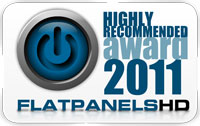
Press the award logo to learn more.
Price and retailer:
| US retailer | UK retailer |
 |
 |  |  |
| Picture quality | Light halos from Nano LED system | Living room |
| Near-perfect blacks | Smart TV platform lacks content, speed | Home Cinema |
| 3D picture quality | Dual Play equals crosstalk | 3D movies & gaming |
| Cheap and comfortable 3D glasses without flicker | Reflections in front glass | |
| Response time, no overdrive trailing | Input lag slightly too high | |
| Viewing angles (also contrast) | ||
| No clouding | ||
| Slim design despite direct LED system |
Subscribe to our Newsletter, RSS feed or twitter to receive notice when new reviews are online. We’ll soon publish our Samsung D550 plasma, Sony NX720, and Eizo FS2332 reviews as well.

